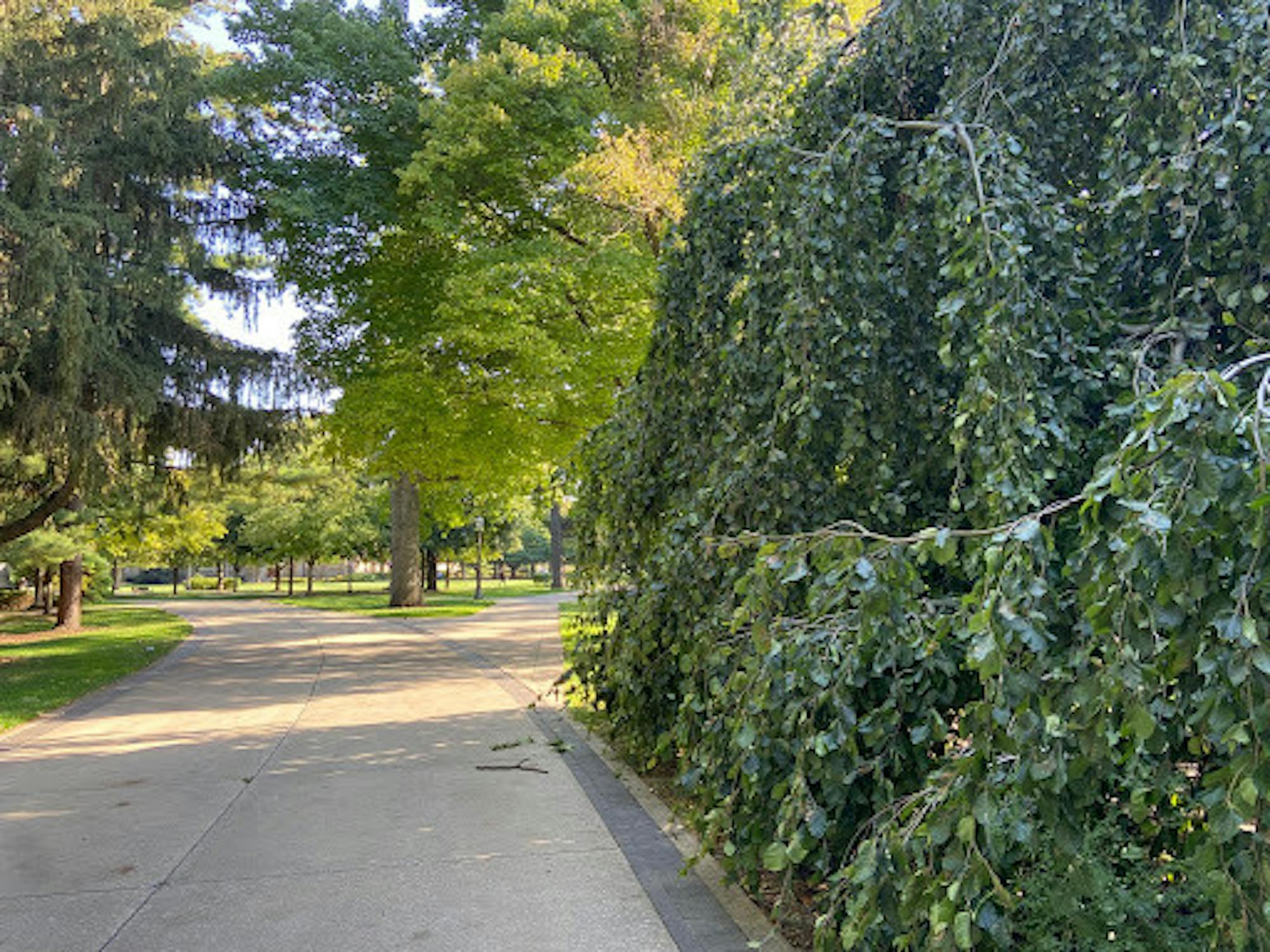As Notre Dame students and visitors know, two rows of maple trees perfectly frame the Golden Dome, an arboriculture formation credited to Rev. Edward Sorin.
This was just one of the facts Barbara Hellenthal, a biology professor from the Notre Dame Museum of Biodiversity, shared during a tree tour Monday evening.
Hellenthal led a guided tree tour of God Quad, beginning at the Sacred Heart of Jesus Statue and highlighting the different species of trees on the quad as well as the stories behind them.
In total, there are 31 native and non-native species represented. Many of the trees on God Quad were planted in order to retain a historic feel and look, Hellenthal said.
Around 100 years ago, people weren’t as concerned with whether a tree was native or non-native to that part of the land. They were more focused on appearance, Hellenthal explained. In the present day, people better understand how native trees better support the insects, birds and entire ecosystem, better than non-native trees, she said. Due to their aesthetic look, there’s a higher representation of unusual, non-native trees on God Quad.
While walking around, Hellenthal kept the tour lively and interesting with unique facts about each species of tree.
One tree species on campus, the Dawn redwood, was originally discovered in the fossil record in 1941 before living examples were found in China.
Just in time for graduation, the Tricolor Beech trees’ leaves transform into a pink and white ringed pattern in the spring.
The Amur Cork Tree has bark that feels exactly like cork with intricate designs carved throughout.
If students are feeling hungry, the Korean dogwood has small, edible, red berries.
Accentuating Notre Dame’s history, the large oak trees around God Quad are at least 100 years old. Then there’s two trees, Austrian pine and Scots pine, that can be told apart by whether their needles bend or break.
To get students in the holiday mood, Scot pines are used as one of the typical Christmas trees, after quite a bit of pruning.
Owing to its sloping, “weeping” shape, the Weeping beech genetically does not have the ligament structures needed to allow it to stand up straight.
White pine, another species found on campus, boasts soft needles and asymmetrical tree shapes due to weak limbs that easily fall off.
One specific White pine on the Main Quad still has two handhewn rings pounded into the bark from the time when there was a post office next to it.
When asked about why she thought that the tree tour is important, Hellenthal emphasized the individuality of Notre Dame’s trees.
“People see the forest, but don’t actually realize the diversity or how interesting individual trees are,” she said. “I feel like it increases to a higher level, your appreciation for what’s there. When you’re driving around South Bend, you can, in the back of your mind, think about what’s planted where and whether that’s the right thing. It just gives you another level of appreciation.”
The Office of Sustainability, which hosted the in-person tree tour, also offers the tour online at their website.













